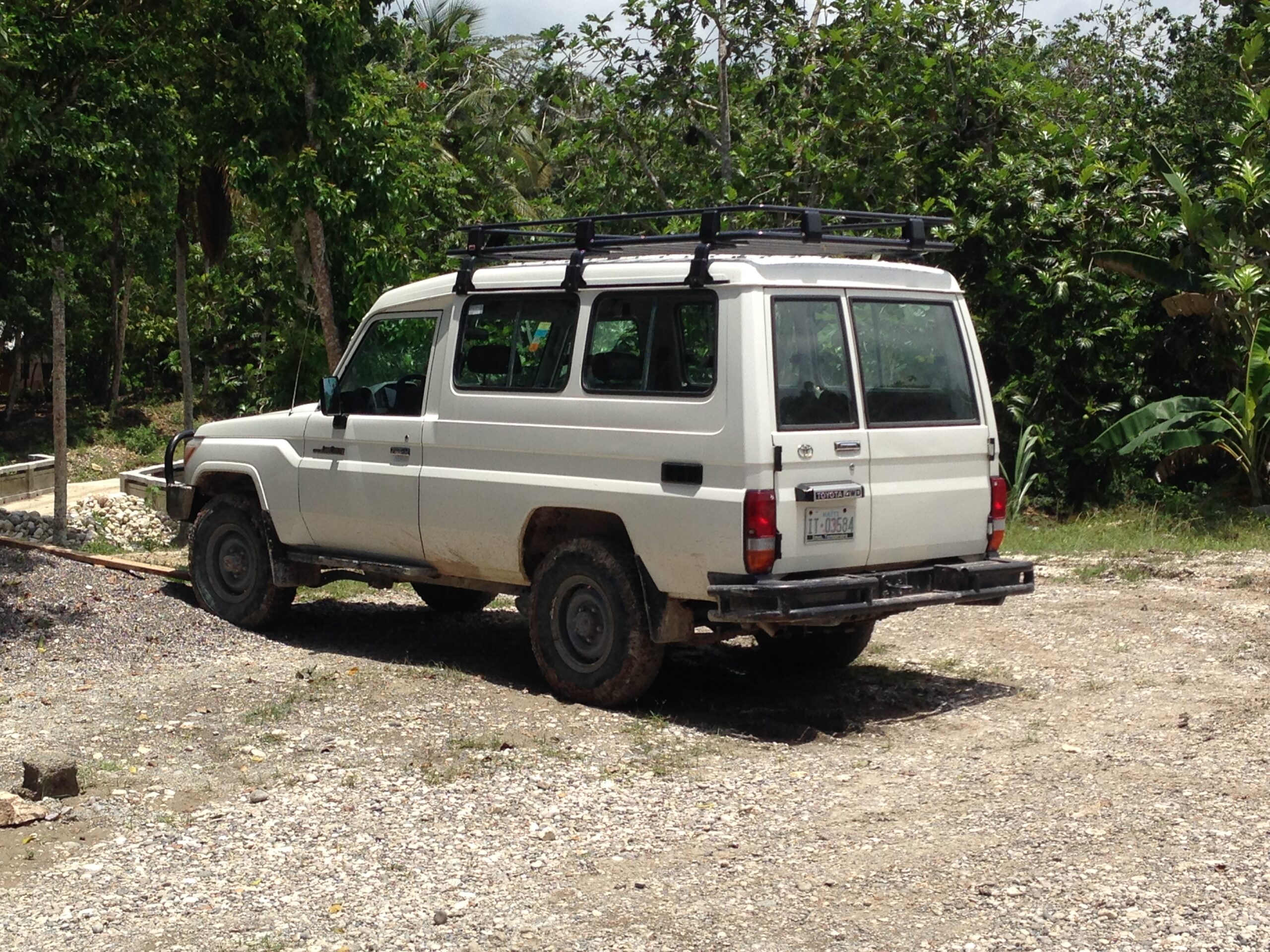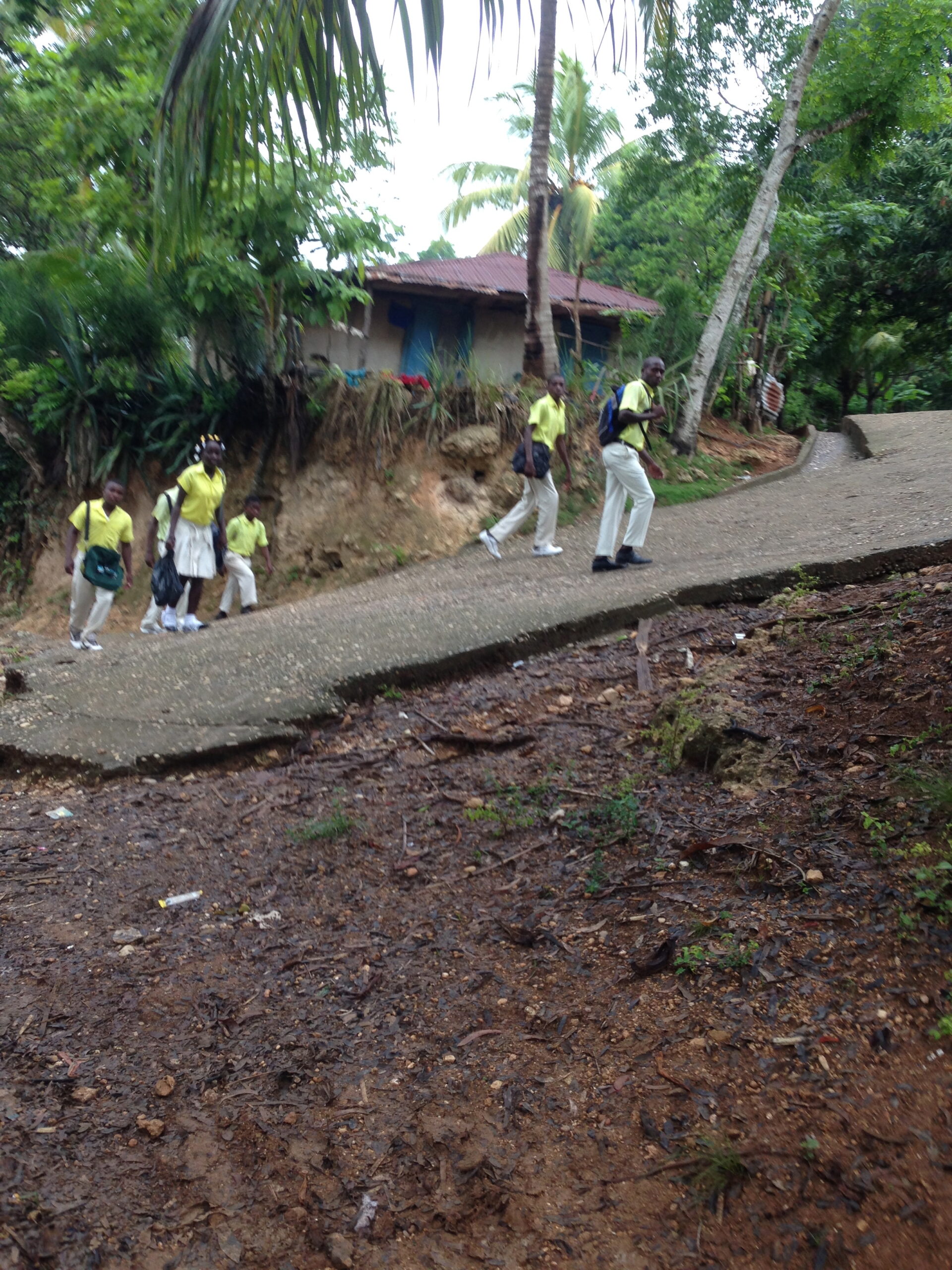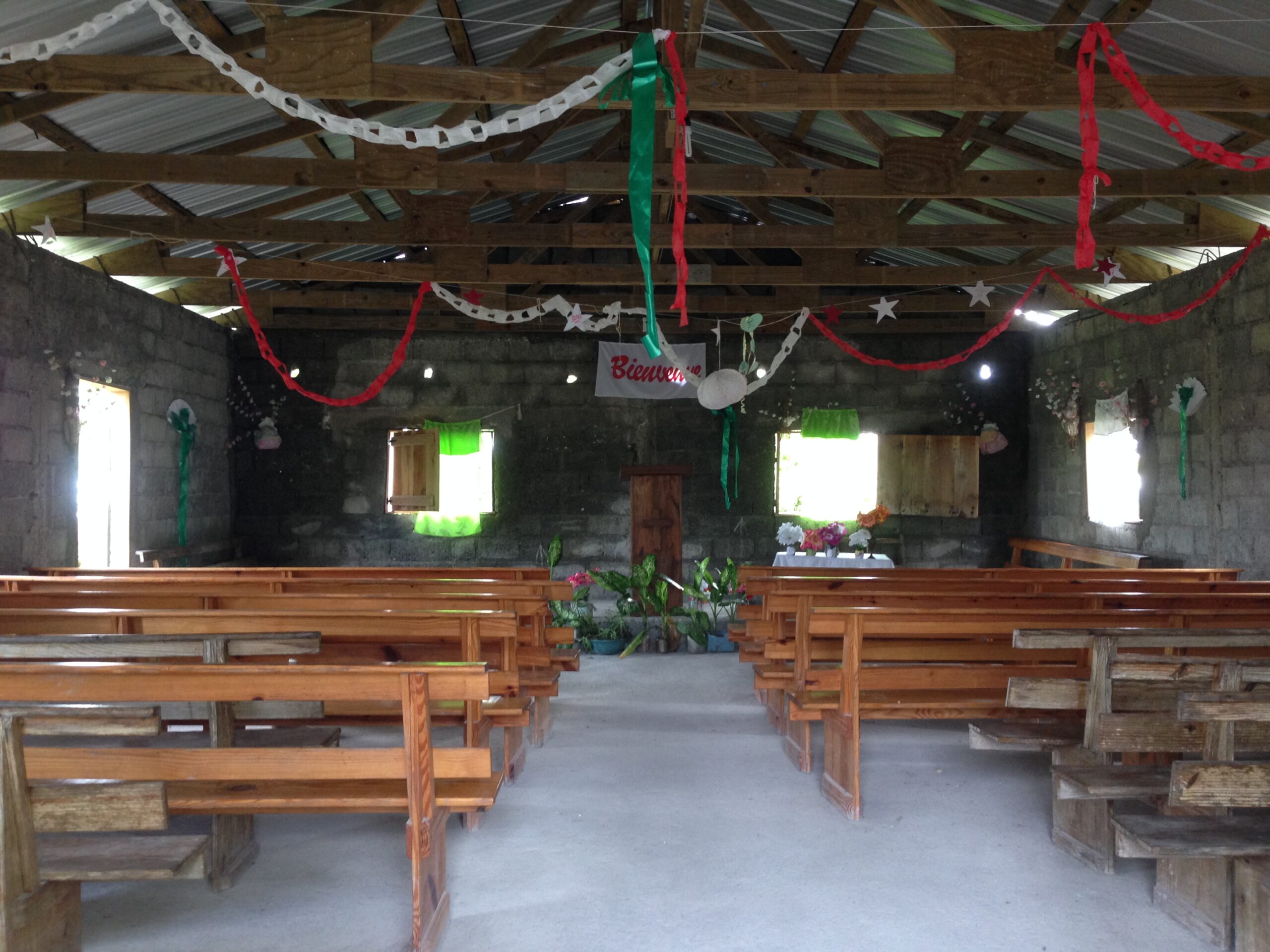After an exciting weekend in Jeremie, we headed out to the countryside for community teaching in Chonel and Duchenn as well as our first day at the clinic in Gatineau. We planned to teach about germ theory, water treatment and sanitation, the importance of hydration, oral rehydration therapy and we brought materials to build a hand washing station called a tippy-tap. In our the trusty jeep, we bounced and bumped our way up the rocky, rutted road marveling at the lush green vegetation and the beautiful view of mountains beyond mountains with a glimpse of the river delta entering the clear blue of the Caribbean Sea.
We passed clinics and schools along the route. People from the communities high on the mountain trekked down along the sides of the road, balancing loads of mangos, bananas and other things to sell in Jeremie. Siblings walked to school in neatly pressed, brightly colored uniforms waving cheerfully at our jeep and shouting out joyful ” Bonjou, bonjou!” then giggling when we returned the greeting.

First was Duchenn, home to community organizer Gemi who works as a coordinator between the health promoters and Dr. Wolf. We stopped at the base of a small hill and the three of us who stayed to teach were shepherded up to a cinderblock church. It was beautifully decorated with streamers, flowers and a welcome sign.
We prepared to give our lessons as a group gathered, women on one side and men on the other. With the help of our wonderful translator, James, we spoke about germs or “mikwobs” and how they make us sick, the importance of clean water and how to make dirty water usable. We talked about hydration and how important it is, especially when one is sick, as well as a recipe for making oral rehydration solution. The group was interested and engaged, asking questions and eagerly telling us what they knew. We taught a song about when to wash your hands, slowly learning the Creole words to the tune of “Row, row, row your boat.” We also showed the group how to construct a tippy-tap, a hands-free hand washing station made with materials easily found in the community.

After the session was finished we hiked along a beautiful mountain ridge passing donkeys, goats and chickens, taking care not to slip on the mud and roads.

We arrived at a second church in Chonel where we could see a glimpse of the clinic on a hilltop across the way. The folks who gathered were a studious bunch, taking notes and asking probing questions. They were a collection of teachers and leaders in the community and they told us they were excited to learn so that they could share the new information with their students.
The rest of the group continued on to Dr. Wolf’s clinic in Gatineau. There is ongoing construction at the clinic but it is functional. There are triage and consultation rooms, even a pharmacy.

Outside there is a large concrete porch and benches for the patients waiting to be seen. Dr. Wolf is the only physician that serves the mountainside, a population she estimates of approximately 30,000. People walk up to 3-4 hours to arrive at the clinic by 9 o’clock and are seen in the order in which they arrive. Dr. Wolf and Cherlie open the clinic with instructions on the flow through the clinic and a prayer. The group at the clinic prepared to teach selected topics to the patients waiting to be seen including information on diabetes and hypertension, two of the main chronic health issues affecting the Gatineau area. After the second community teaching session and a much needed water break, we headed down into the valley and back up another ridge to meet up with the group at the clinic. Dinner that night was fried goat, a Haitian specialty with sides of rice and beans, fried plantains and fried veritab or breadfruit, everything was delicious! We planned the next days activities by lantern light and then collapsed, exhausted and happy, into bed.






